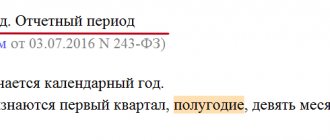Income tax concept
Corporate income tax is a direct payment deducted depending on the financial activities of a legal entity. The tax base is taken into account, obtained by subtracting expenses incurred from income received.
This type of taxation belongs to the most important types of federal taxes. The principle of its operation provides a fiscal and regulatory function aimed at regulating the activities of legal entities. The calculation procedure depends on the type of taxpayer and tax base.
Categories of expenses taken into account when calculating profit
Expenses are considered to be justified and documented expenses incurred by the payer during the taxable period. Expenses can be direct and indirect, and, by analogy with income, operating and non-operating.
Also, the taxpayer is required to take into account the list of expenses fixed in legislation that are not taken into account when calculating profits (for example, if the company repays a loan or accrues dividends on shares).
Who pays income tax?
Corporate income tax is paid by :
- all Russian legal entities;
- foreign legal entities that have their representative offices in the Russian Federation or receive income from Russian sources;
- foreign companies recognized as residents of the Russian Federation on the basis of international treaties;
- foreign organizations whose place of management is recognized as Russia, exceptions are cases provided for by international agreements.
Corporate income tax is not paid :
- legal entities with special taxation regimes - Unified Agricultural Tax, simplified tax system, UTII;
- payers of special income tax from gambling business;
- companies listed as participants in the Skolkovo Innovation Center project.
It is emphasized that the obligation to pay tax on profit arises when there is an object of taxation.
Objects of taxation
The object of taxation is the categories of income received by an organization as a result of its financial activities. All profits received are accounted for without VAT and excise taxes.
The main categories of income include:
- profit from the sale of goods or services - this includes revenue both from own production and from the resale of previously acquired property rights;
- non-operating income - these include shared ownership in other organizations, differences in exchange rates, rental of property, interest charges.
Article 251 of the Tax Code of the Russian Federation provides for a list of income not subject to corporate income tax. The main sources of such profit include:
- property received as collateral or deposit;
- contributions to the authorized capital of the company;
- property or funds received under a loan agreement;
- capital investment in leased property.
Costs taken into account
Expenses taken into account for taxation include funds spent on the production and sale of relevant goods and services. When calculating, the corresponding tax period is taken into account.
Also, the corporate income tax takes into account non-operating expenses:
- maintenance of leased property;
- payment of interest on debt obligations;
- issue of own securities;
- exchange rate changes resulting in additional costs;
- liquidation of decommissioned assets.
Documented deductions are recognized as expenses taken into account for tax purposes. There is also a list of expenses that are not taken into account for tax purposes - dividends, loan repayments, contributions to the authorized capital. A complete list of such deductions is presented in Article 270 of the Tax Code of the Russian Federation.
Categories of income taken into account when calculating profit
As income, all revenue from the organization’s basic activities is taken into account, and the amount earned from other forms of activity is added. These are, respectively, operating and non-operating income. When accounting for profit, the company's income is calculated without excise taxes and VAT. Sales types will be revenue from trade in goods, services (your own, as well as those purchased in advance), and property rights. An example of non-operating income is the receipt of money from the leasing of enterprise equipment.
Income is subject to accounting according to primary documentation and various reports that confirm the income of the tax payer.
Tax calculation
The basis for calculating corporate income tax is a clear accounting of income and expenses incurred during the tax period. To do this, the taxpayer chooses one of the accounting methods :
- accrual principle - income and expenses are recognized for the period in which they occurred, regardless of the actual receipt or write-off of funds;
- cash method - income and expenses are recorded based on the dates of actual accrual.
Each method has its own procedure for recognizing payments. It is emphasized that the taxpayer must choose one calculation method. It is not allowed to use different principles for income and expenses.
Accrual method
Calculation of taxes using the accrual method provides for a certain procedure for recognizing expenses and income. Profit is recognized based on the following criteria:
- income is recognized for the tax period in which it occurred, regardless of the date of receipt of funds, property or rights to property;
- if the relationship between income and expenses cannot be determined accurately enough, the taxpayer independently distributes them on the basis of uniformity;
- taxable profit from the sale of goods and services is calculated based on the date of sale and does not depend on the date of receipt of funds;
- Non-operating income is recognized on the date of signing the property acceptance and transfer act or the corresponding document, as well as on the date of receipt of funds to the taxpayer’s account under dividends and other agreements.
the following expenses are taken into account in the tax base :
- date of transfer of production raw materials;
- signing by the taxpayer of the act of acceptance and transfer;
- tax payment date;
- settlement periods for concluded contracts.
Cash method
Using the cash method of calculation, the taxpayer takes into account income and expenses on the date of their actual payment. Profit is recognized when credited to a bank account, property or rights to property are received.
The costs incurred are also taken into account in the same way. Payment is recognized as the immediate termination of counter-obligations on the part of the taxpayer.
What you need to know about accrual time
If an organization appeared or ceased activity after 01.01, the accrual period for the taxpayer will be calculated differently (information about this can also be found in Article 55 of the Tax Code of the Russian Federation). A new company needs to consider the first period as follows: the starting point is the start date of the company’s activities, the end point of the tax period is the end of the year.
Clause 2 of Art. 55 of the Tax Code of the Russian Federation on the peculiarities of the tax period for new organizations
An example would be the period from June 25 to December 31, if the company has just started operations (registration was carried out after January 1 of the current year).
If the first data about the company appeared in December, the income tax forms the base from the moment of creation until the end of the next year. This is only relevant for those who registered their activities in December.
If a company has encountered organizational changes (it has been liquidated or undergone reorganization), the final tax period is determined for it. In this case, the amount to be transferred will be determined for the period that begins at the moment the company is deregistered and ends at the moment the corresponding entry is made in the register.
If the above changes (creation of a company, its liquidation or organization) occurred within one year, the period from the date of official registration to the moment of change of status is taken to calculate payments to the budget. If an enterprise was created in December of the current year and is liquidated or subject to reorganization in the next year, it is determined in a similar way.
The end point of the accrual period in this case falls on the next calendar year. Example - from December 25 of the current year to June 26 of the next.
Tax calculation procedure
The amount of corporate income tax is determined by a simple formula: the tax rate is multiplied by the tax base. In this case, the calculation should pay attention to the following aspects:
- the period for which corporate income tax is calculated;
- the amount of all income received during the specified period;
- a list of expenses deducted from the profit received;
- revenue and loss from sales, as well as non-operating activities;
- final tax base;
- exclusion of the amount of loss to be carried forward.
After highlighting the relevant points, they begin to determine the rate and tax base.
Tax rate
The basic corporate income tax rate is 20% . Of them:
- 2% goes to the federal budget, in 2017-2020 - 3%;
- 18% goes to the budget of the constituent entity of the Russian Federation, in 2017-2020 - 17%.
In certain cases the tax rate may be lower. Subjects of the Russian Federation can reduce corporate income tax to 13.5%. This value may be further reduced for the following categories of taxpayers:
- residents of special economic and free economic zones;
- participants in regional investment projects;
- residents of territories of advanced social development or the free port of Vladivostok.
For corporate income tax, in addition to the main one, special tax rates :
- 30% - income received from securities issued by Russian companies, with the exception of dividends;
- 20% to the federal budget - profits from the production of hydrocarbons, as well as revenue from foreign companies;
- 15% - tax on ownership of state, municipal and other securities, as well as dividends received by foreign companies on shares of Russian organizations;
- 13% - dividends received by Russian companies, as well as income on shares, the rights to which are determined by depositary receipts;
- 10% - income of foreign companies not related to the activities of permanent representative offices;
- 9% - interest income on certain municipal securities.
Article 284 of the Tax Code of the Russian Federation also provides for cases when the tax rate is zero. It is emphasized that for each rate the tax base is calculated separately.
The tax base
The tax base is the profit of the organization taking into account the expenses incurred. Depending on the type of income, the following calculation principles :
- sales - expenses incurred for the same purposes are deducted from the amount of income received from the sale of goods or services;
- non-operating transactions - revenue received minus corresponding losses.
The final tax base consists of the sum of non-operating and sales income. If necessary, losses subject to carry forward are excluded from it.
If, as a result of calculations, the tax base turns out to be negative, that is, expenses exceed income, its value is recorded as zero. This is due to the fact that corporate income tax cannot be negative - either positive or zero.
If there is no tax base, there is no taxation.
Calculation of advance payments
Calculation of advance payments for corporate income tax is carried out depending on the tax period. The quarterly advance is calculated as the difference between the tax for the current and previous quarter. Eg:
- corporate income tax for the current quarter amounted to 18 thousand;
- for the previous quarter, a tax of 15,300 rubles was paid;
- The advance payment amount is 2700 rubles.
Calculation of monthly advance payments is carried out according to similar principles:
- monthly advance payments in the second quarter are determined by the tax for the first quarter divided by three;
- for the third quarter, find the difference between the tax for the half-year and the first quarter - that is, the actual tax for the second quarter, which is also divided by three;
- advance payment for the last three months - the tax for six months is subtracted from the tax for a nine-month period, the remainder is divided by three.
The monthly advance payments for the first three months are identical to the advances paid for the last quarter of the previous year. If the company is just formed, then monthly advances are not paid until the tax for the full quarter is calculated.
If the amount received is negative, the advance is not paid.
Advance on actual profit
The monthly advance payment based on actual profit is determined according to the following algorithm:
- advance payment for January is equal to the tax on income actually received in a given month;
- for February, the advance payment is equal to the tax for January and February minus the advance payment paid for January;
- advance for March - corporate income tax for January-March minus advance payments for January and February.
All other months up to December are calculated using the same algorithm. This calculation assumes that taxpayers file tax returns 12 times a year.
In order to switch to advance payments based on actual profits next year, the taxpayer must notify the tax service before December 31 of the current tax period.
Tax and reporting period
The tax period is the time during which the tax base is formed and income tax is paid accordingly. For organizations, the tax period is equal to the calendar year .
The reporting period is an intermediate stage for paying taxes and making advance payments. The reporting period can be a month, a quarter, a half-year, or nine months.
In the context of these periods, the tax return is submitted:
- no later than 28 days from the end of the relevant reporting period;
- no later than March 28 of the year following the tax period.
Documents are submitted to the tax service at the location of the organization. For each individual division, the declaration is submitted at the location of the corresponding department.
Corporate income tax return
1 file(s) 961.11 KB
Download
The concept of tax period
The presence of a tax period indicates that the tax has been established. This rule is enshrined in Article 17 of the Tax Code of the Russian Federation. Without a tax period, a tax cannot exist, which makes it important to correctly establish and use periods when calculating taxes. In the article we will consider the features of tax regulation of tax periods.
A tax period is a calendar year or other period in relation to a specific tax, at the end of which the tax payable is calculated.
At the same time, the main tax period may consist of sub-periods, for example: quarter, half-year, 9 months.
Article 52 of the NKRF does not apply to any one tax. It is universal in nature and establishes rules that apply to the determination of tax periods for various taxes established by the tax legislation of the Russian Federation.
The tax period is established according to Federal Law No. 107 “Calculation of Time”. According to this law, the tax period is calculated according to the Gregorian calendar, which is adopted in the Russian Federation and is a computing system that is based on the Earth’s circulation cycles, where one cycle is equal to 365 days or 2425 days.
Article 190 defines a calendar date or period of time as year, month, week, day and hour. During the tax period, the taxpayer is required to make advance payments, the total amount of which is deducted from the annual payment.
In addition, the calculation of deadlines for paying taxes can begin with the occurrence of legal facts that mark the beginning or end of the period. For example, among such facts, modern legislation distinguishes the reorganization and liquidation of a company.




